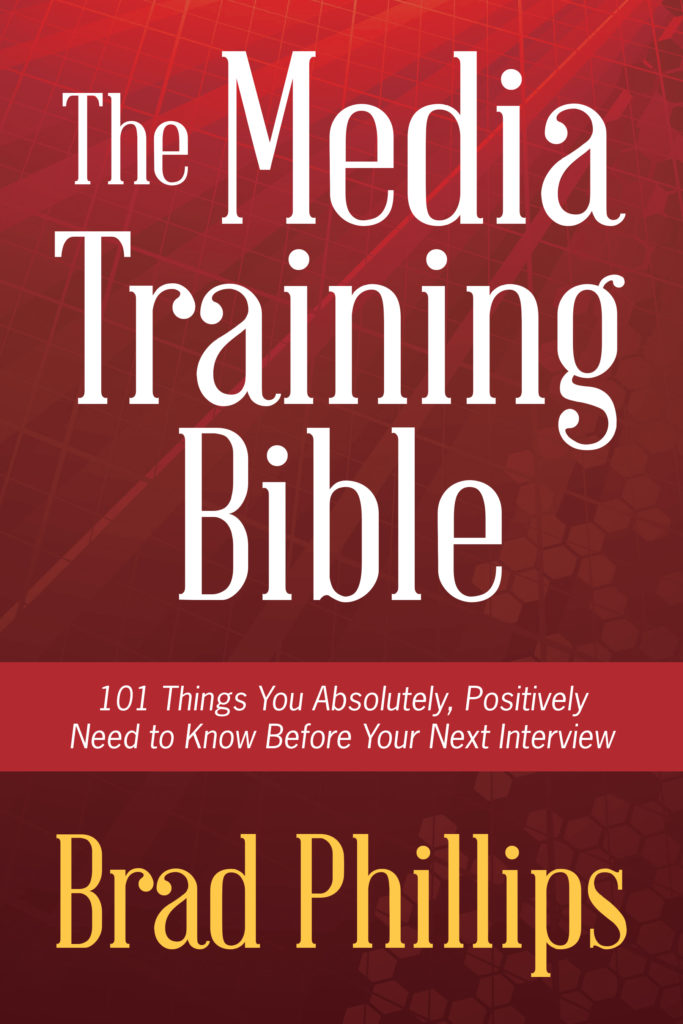An Introduction To Press Conferences
This is an excerpt from my new book, The Media Training Bible: 101 Things You Absolutely, Positively Need to Know Before Your Next Interview, now available in soft cover and all major e-book formats.
Press conferences aren’t as common as they used to be. Technology has allowed companies to disseminate information to reporters (and the public) without gathering the press in a single place—and that’s a good thing, since reporters have less time than ever to leave their desks to attend a press conference (and many won’t).
Still, press conferences can play an essential role in media communications, particularly for major news announcements, in political campaigns, and during crises.
Press conferences can be tricky, since reporters from competitive news organizations often play a game of one-upmanship to see who can ask the most difficult question. For that reason, press conferences—especially those about controversial or challenging topics—require a deft spokesperson. Ask yourself whether a press conference is truly the best way to release information before scheduling one.
If you decide to proceed with a press conference, here are four rules to remember:
1. Test the logistics: I’ve attended dozens of press conferences in which the spokesperson walks to the lectern, shuffles his papers, pats his finger on the microphone to test the volume, and looks around for a place to rest his water. When I see a press conference begin that way, it’s a sure sign I’m in for a snoozer.
You’d be surprised how many people fail to check the logistics before reporters arrive. Get there early, position the microphone to a comfortable height and test the volume, check the PowerPoint and its remote control, position your papers, and place a glass of room-temperature water within reach.
2. State your name: Begin the press conference by stating (and spelling) your name and giving reporters your preferred title. Identifying yourself at the beginning helps ensure that broadcast journalists get your on-screen ID (known as a chyron) right.
3. Coordinate with your co-presenters: Little is more awkward than watching co-presenters fumble while transitioning to one another. Good co-presenters are like teammates in a relay race; one hands the baton off to the other seamlessly.
Upon finishing the first portion of the press conference, a presenter should conclude with a line that wraps up the section and introduces the next speaker’s part, such as, “Now that you have a better understanding of how our company intends to roll out this product, Joanne Myers, our lead researcher, is going to explain some of the science behind it.”
For the question-and-answer period, coordinate with your co-presenters in advance to determine which types of questions each of you will answer. While you might handle the business questions, for example, Joanne will take the lead on answering the scientific ones.
4. Maintain eye contact: If multiple cameras are present, keep eye contact with the questioner while answering the question. That way, every camera—regardless of its position—will show you delivering your answer with steady eye contact in one direction rather than darting purposelessly from one person to another.
The Media Training Bible is available from Amazon here and for the Kindle here.





Great stuff, Brad. I’m sure you’re enjoying your time off and printing tips like these while you’re out is super.
I’d add one thing that has always just killed me at press conferences. If there are several people on the stage, they all need to pay attention to the speaker and at least act as if they are interested. Most of the time they drift off and look so danged dour. Who’s going to be interested if the company senior leaders aren’t?
Thanks Brad.
Thank you, Doug! You raise a terrific point, and it’s one I wish I had thought to include in the book. I’ll make sure that point is included in the second edition.
Thanks for reading, and be well!
Brad
[…] “Little is more awkward than watching co-presenters fumble while transitioning to one another,” advises Brad Phillips, president of Phillips Media Relations. “Good co-presenters are like teammates in a relay race; […]